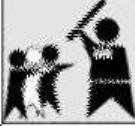 From the popular mood and the protest mechanics, Nepal has clearly plunged into a 1990-style convulsion. Each act of repression by the royal regime is adding protesters to the streets. More and more “liberated areas” are being proclaimed in the quest to usher in “total democracy.”
From the popular mood and the protest mechanics, Nepal has clearly plunged into a 1990-style convulsion. Each act of repression by the royal regime is adding protesters to the streets. More and more “liberated areas” are being proclaimed in the quest to usher in “total democracy.”Home Minister Kamal Thapa is emphasizing how the movement has gone beyond the control of the mainstream parties – drawing verbatim from his pronouncements as a minister in 1990.
Whether the ongoing protests will yield any substantive change remains to be seen. For now, the royal regime, citing Maoist infiltration of the protests, can be expected to intensify its crackdown, unless the security forces desert en masse.
The severity of the royal regime’s crackdown was only to be expected. General Satchit Sumshere Rana, the army chief in 1990, is today a principal advisor to King Gyanendra. Sixteen years ago this week, Gen. Rana had sought King Birendra’s permission to disperse with more lethal force the sea of protesters in front of the palace.
Having attacked the statue of King Mahendra – who as the father of the Panchayat system symbolized the partyless regime -- the crowds were marching ahead purportedly to storm the palace gates. Soldiers did open fire on the protesters, inflicting heavy loss of life. King Birendra’s decision to lift the ban on political parties may have prevented further bloodbath. The showdown shifted in large part to the political domain.
Over the years, Gen. Rana has repeatedly insisted – often with tinges of regret -- that the army could have easily crushed the movement and saved Nepal from the subsequent cataclysms.
As the new constitution was being drafted in the summer and fall of 1990, Gen. Rana led an army delegation to interim prime minister Krishna Prasad Bhattarai demanding that provisions relating to the king’s control of the military not be tampered with. Bhattarai refused to relent. Gen. Rana went on to become Nepal’s ambassador to Myanmar, technically an appointee of the elected government but in reality a palace nominee. He must have gained an opportunity to study how an internationally isolated military junta succeeded in maintaining its grip on power.
The wider constellation of Nepalis known pejoratively as royalists pondered how things might have changed had King Birendra acceded to Gen. Rana’s request. Compared to the 13,000 lives lost in the Maoist conflict, the loss of an extra hundred more lives in 1990 would hardly have seemed remarkable. The Panchayat system, already branded a genocidal regime, could easily have absorbed that additional stigma.
That’s not the real point. The official inquiry into the 1990 suppression of the democracy movement came out with a list of around 70 dead. Anyone familiar with that movement knew the figure to be outrageously low. More than 70 lives were lost in front of the royal palace that fateful afternoon alone.
What propelled the newly ascendant democratic leaders to lower those figures? Certainly not a sudden desire to redeem the Panchayat system in the eyes of the people. They new had a selfish motive. The majority of the protesters killed were non-Nepalis – or, more accurately, Nepalis of India.
How did these people become such an integral a part of the 1990 movement? Most had been evicted from their homes in the northeastern states of India amid ethnic violence there. These people formed the core of India-funded protesters aimed at intimidating a recalcitrant palace. Marich Man Singh Shrestha, the last prime minister of the Panchayat system, has pointed to the sudden and massive inflow of Indian money during this movement.
Once in power, the democratic leaders could not have afforded to list such a heavy cluster of non-Nepalis as “martyrs,” especially when they themselves were criticized as Indian protégés.
The 1990 constitution was hailed a compromise document between the palace, Nepali Congress and communist parties. However, the palace was hardly accepted as an equal partner. King Birendra and the entire royal family continued to be subjected to incessant calumny. From the political discourse, you would have thought the monarchy had already been overthrown.
That sordid trend evolved into a wider one. Depending on which side of the political fence you were on, the palace became a stepping stone to power or a major stumbling block. King Birendra’s detachment from day-to-day politics was castigated as a design calculated – subsequently in collusion with the Maoist rebels -- to undermine multiparty democracy. When the monarch began seeking clarifications from the prime minister on the growing Maoist insurgency, the ruling party and opposition denounced the palace for conspiring to retake power.
The moral of the story: In refusing Gen. Rana’s request, the palace ended up exposing itself to a fate worse than one a bloody crackdown might have inflicted. King Gyanendra is certainly not about to repeat that mistake.